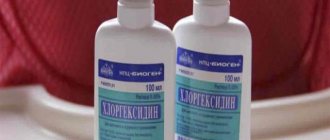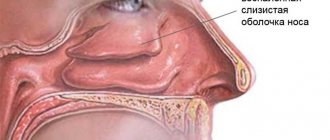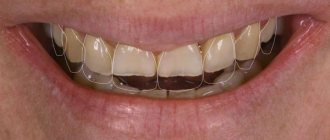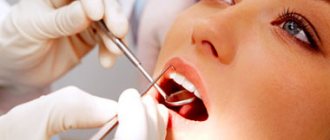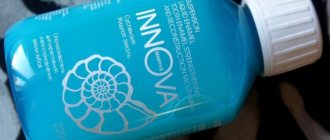Hydrogen peroxide is widely used in various fields of medicine. Several years ago, scientists announced that this substance could help fight tooth decay. Is it possible to treat caries with hydrogen peroxide, what methods are used in modern dentistry? Read about this in our article.
In this article
- Features of the use of hydrogen peroxide in dentistry
- Hydrogen peroxide in the treatment of caries
- Hydrogen peroxide in home treatment of caries
- Current methods of caries treatment
- Conclusion
Features of the use of hydrogen peroxide in dentistry
Hydrogen peroxide is an antiseptic solution based on 3% hydrogen peroxide. It has a powerful disinfectant and antibacterial effect and quickly stops bleeding. Due to these properties, peroxide is widely used in dental practice. In particular, hydrogen peroxide is used to treat the mucous membranes of the oral cavity for periodontitis, gingivitis, stomatitis, to disinfect the edges of the socket after tooth extraction, and to treat ulcers. The product is also used in the procedure for whitening tooth enamel, removing pigment spots and plaque from it. Peroxide is the main component of whitening gels and pastes.
Positive properties of the composition
Hydrogen peroxide is an active substance, H2O2, which, after application to the skin, mucous membranes, enamel, and also when interacting with blood and saliva, begins to foam strongly, produces oxygen molecules and has an oxidizing effect. It penetrates deep into tissues and various pathological foci, effectively removes contaminants from there and thereby reduces the number of harmful bacteria.
Softens tissues, promotes easier and faster separation of dead cells, removal of pus from wounds, cleansing, and has an antioxidant, anti-inflammatory and even hemostatic effect. It is also believed that peroxide strengthens sore gums and helps stop bleeding from small capillaries
Important ! Peroxide suppresses the activity of gram-positive bacteria well, but it does not fight other pathogens (fungi, gram-negative bacteria, viruses, anaerobes), which is what other products successfully do - Chlorhexidine, Miramistin.
Due to its oxidizing ability and the ability to release active oxygen, it removes not only impurities, but also destroys color pigment, due to which it is actively used in aesthetic dentistry for enamel whitening procedures. True, dentists use formulations with a high concentration of peroxide - from 15%. If we talk about the hydrogen peroxide solution, which can be found in pharmacies and used at home, then it has a low concentration of the active substance - 3%. And this, of course, will not allow achieving a significant change in the tone of the enamel. But it will be useful in other cases, and it is quite inexpensive, which is an undeniable advantage.
Some also find that gargling with hydrogen peroxide has a soothing effect if you have a toothache or sore throat. But this is not entirely true. The product reduces the number of bacteria and pathogens, but for a short period of time, but it cannot relieve pain.
Hydrogen peroxide in the treatment of caries
The cause of dental caries is the bacteria Streptococcus mutans, which forms dental plaque - a biological bacterial film. These microorganisms feed on sugars that enter the human body along with food, and as a result of their processing they form organic acids. The latter destroy enamel, dentin and other tooth tissues.
Thus, plaque poses a threat to the development of caries. At the same time, biological film is difficult to remove or destroy with modern antimicrobial drugs. Several years ago, a team of scientists conducted research and developed nanoparticles that can destroy the structure of dental biofilm, destroy pathogenic microorganisms and prevent the development of caries.
Nanoparticles consist of iron oxide, polysaccharides and some other substances. When exposed to an acidic environment (and bacteria in dental plaque produce a lot of organic acids), these nanoparticles begin to produce hydrogen peroxide. This compound has a powerful antiseptic effect, destroys pathogenic microorganisms, destroys bacterial dental films, thereby protecting teeth from carious lesions. As part of the study, scientists tested their development on volunteers and came to the conclusion that nano-sized particles effectively destroy tartar and destroy bacteria without causing damage to the enamel or disruption of the microflora in the oral cavity. According to the scientists' findings, the use of nanoparticles with a one percent solution of hydrogen peroxide destroys more than 99% of cariogenic bacteria.
Researchers have suggested adding such particles to toothpastes or mouth rinses, since the use of these products can be an excellent preventive measure for dental caries. The practical application of the development can only be discussed after successful clinical trials. But the antiseptic effect of hydrogen peroxide on cariogenic bacteria is beyond doubt.
Rules for using the solution
You need to take a fresh solution of hydrogen peroxide into your mouth to rinse your teeth and mucous membranes, carefully “drive” it, spit it out and repeat the procedure several more times. In total you will need 2-3 minutes. It is better to use this rinse aid only in fresh form. You should not leave part of the solution for later, because it will lose its effectiveness, since when interacting with air, light and heat, the active ingredients are quickly destroyed.
Expert opinion
Tatyana Vitalievna Varlamova
Specializations: Dentist-therapist
Experience: 6+
“It is important to understand that prolonged exposure to peroxide on mucous membranes can lead to the exact opposite effect than what was initially expected: tissue regeneration processes will slow down, gum bleeding may increase, irritation and even burns will appear, and teeth will become sensitive.”
This solution should be used no more than 3-5 times a day and no longer than 2-3 days in a row. Afterwards, it is better to give preference to other antiseptics, for example, Miramistin. Immediately after rinsing, it is recommended to soothe the mucous membranes with a decoction of chamomile, calendula, or just warm water. You should avoid eating and drinking for the next half hour.
Hydrogen peroxide in home treatment of caries
While scientists are looking for new ways to combat caries using hydrogen peroxide, fans of traditional treatment methods are offering their own options. Let us immediately note that any use of peroxide (for the prevention and treatment of caries, oral hygiene) without consulting a doctor can be dangerous to health.
On the Internet you can find dozens of folk recipes that include hydrogen peroxide. The most popular is mouthwash. It has a bactericidal effect, helps reduce pain, inflammation, and eliminate bad breath. In some cases, if indicated, such rinses may be prescribed by a dentist.
But it is important to prepare the solution correctly, otherwise there is a risk of burning the mucous membranes. A rinse solution prepared in the following proportion is considered safe. Add one teaspoon of 3% hydrogen peroxide solution to a glass of warm boiled water and mix thoroughly. Rinse your teeth with a small amount of solution for 5-7 minutes, periodically spitting out the liquid.
When rinsing, do not allow the solution to enter the esophagus and stomach, since peroxide can damage the walls of these organs. That is why you should use rinses based on hydrogen peroxide very carefully, only as prescribed by a doctor. This method should not be used by children.
Contraindications for use
You should not use the product in cases where you have very sensitive enamel or multiple untreated caries. Here it can have an even more irritating effect and increase unpleasant symptoms.
Teeth may become sensitive due to the development of caries
It is worth discarding it if there are signs of allergies (swelling of tissues, rashes and itching, sore or sore throat) and increased sensitivity of tissues to peroxide. If after its use the unpleasant symptoms intensified, bleeding and hyperesthesia appeared, then there is no need to continue rinsing further.
Many experts also do not recommend rinsing the mouth with peroxide for pregnant and lactating women and children (in particular those under 3 years old). Or do it with great caution. After all, there is always a risk of swallowing the composition, which can cause indigestion and severe heartburn.
Important ! If for some reason undiluted 3% pharmaceutical hydrogen peroxide gets into the esophagus, then in order to avoid irritation and even burns of mucous tissue, the following measures should be taken immediately: drink enough water and enterosorbent.
Current methods of caries treatment
In traditional dental practice, treatment with hydrogen peroxide is not used. In addition, hydrogen peroxide, despite its pronounced antiseptic effect, cannot restore damaged tooth tissue or compensate for the lack of minerals in tooth enamel. Therefore, if you have symptoms of caries, you should not self-medicate. Seek help from a good dental clinic.
Today, caries is treated in two main ways - conservative or surgical. Conservative methods are non-invasive, that is, treatment is carried out without preparing the tooth.
- Remineralization of enamel.
The tooth is coated with compounds that contain phosphorus and calcium ions, the main mineral substances of tooth enamel.
- Fluoridation.
Fluoride-containing gels, varnishes, and pastes are applied to the surface of the teeth, which ensure saturation of the enamel with fluorides. They strengthen the surface of the teeth, increase the resistance of the enamel to the action of bacteria, and protect the teeth from calcium losses.
- ICON method.
Another minimally invasive method of treating carious lesions, which is carried out without drilling or filling the tooth. The dentist alternately applies several compounds to the surface of the tooth, the last of which seals the pores of the tooth enamel. This sealing protects teeth from the penetration of bacteria into deep tissues and prevents the development of caries.
These methods do not cause pain to the patient, so they can be performed without anesthesia. But they give an effective result only if the carious process is at the initial stage and there is no carious cavity in the tooth yet.
If there is a hole in the tooth, caries is treated surgically:
- Cleans enamel from plaque and tartar.
- An anesthetic injection is given if treatment for medium or deep caries is considered.
- The cavity is drilled out and all affected and dead tissue is carefully removed.
- The cavity is disinfected with antiseptics and its walls are coated with an adhesive composition, which will allow the filling to adhere better.
- An insulating or therapeutic pad is placed at the bottom of the cavity to protect the pulp or relieve inflammation.
- The tooth is filled with a suitable material and given its natural shape.
- Grinding and polishing are carried out to align the tooth with the bite and form a smooth, even surface.
A correctly selected treatment method helps to cope with caries at any stage, stop the development of the pathological process, and return the tooth to its natural appearance.
What is tooth flux
Tooth gumboil is usually an exacerbation of diseases such as periodontitis or periodontitis. An acute inflammatory process begins in the area of the tooth root, when the nerve has already died and an infection develops in the root canal.
Periostitis is a common disease among children and adults. The inflammatory process manifests itself as follows: a cavity filled with pus appears on the mucous membrane of the jaw - a purulent bubble. As a rule, flux is accompanied by severe swelling of the cheek, pain and increased body temperature.
In the absence of professional dental care, the inflammatory process will develop further. Tooth flux can cause serious complications: phlegmon and sepsis. The patient will need a lot of time to recover.
Tooth gumboil: what medications to take?
This is the most common question in Internet search engines when people try to deal with the problem on their own. Our answer: “Do not take anything before consulting a doctor!” Only the attending physician, taking into account the stage of the disease and your individual characteristics, can prescribe an antibiotic for tooth flux, which stops the inflammation process. The dentist will also advise which drug is best to use as an anesthetic.
How is tooth flux treated?
If the cause of the inflammatory process is a diseased tooth, then at the first stage the question of the possibility of preserving it is resolved. Our experienced specialists will do everything to avoid removal.
Treatment usually involves five stages:
- first: the doctor, under local anesthesia, removes all tissues affected by caries, old fillings and creates direct access to the tooth canals
- second – removal of the nerve and determination of the length of the root canal
- third - expansion of the root canal of the tooth to gain access to its deeper areas
- fourth - installation of a paste containing calcium into the canal to stop acute inflammatory processes.
- fifth – temporary filling of the root canal
If necessary, an incision is made in the gum, the pus is removed and drainage is installed. For tooth flux in an adult, the doctor may also prescribe antibiotics or other drug therapy. In three to seven days you will need to come back for a follow-up appointment. If the doctor sees that there is no pus, the abscess is completely stopped, and the swelling of the cheek has subsided, he will seal the dental canal. The final stage of treatment will be the restoration of the crown of the tooth.
Diagnosis of tooth flux
At the dentist's appointment, a thorough examination of the oral cavity and an X-ray examination - a targeted or panoramic image - is carried out. In some cases, two studies will be required to make an objective diagnosis.
As soon as the diagnosis is made - exacerbation of chronic periodontitis and the diseased tooth is identified, the doctor begins treatment.
Symptoms of tooth flux
Among the first signs of periostitis are the formation of a painful infiltrate on the alveolar process, fluctuation, and swelling. The tooth itself usually doesn’t hurt anymore
If you discover symptoms of periostitis, we strongly recommend that you consult a doctor who will stop the spread of infection and remove inflammation. But if you haven’t decided or haven’t found the time to make an appointment with a dentist, then let’s figure out how the situation will develop further.
If the spread of infection is not stopped, then at the next stage the flux will manifest itself visually, as we wrote about earlier - a bubble appears on the gum, the cheek swells. In this case, urgently go to the Center for Modern Dentistry, otherwise you risk ending up in the hospital in a couple of days. Surgery will be complex and may last for a week or more.




